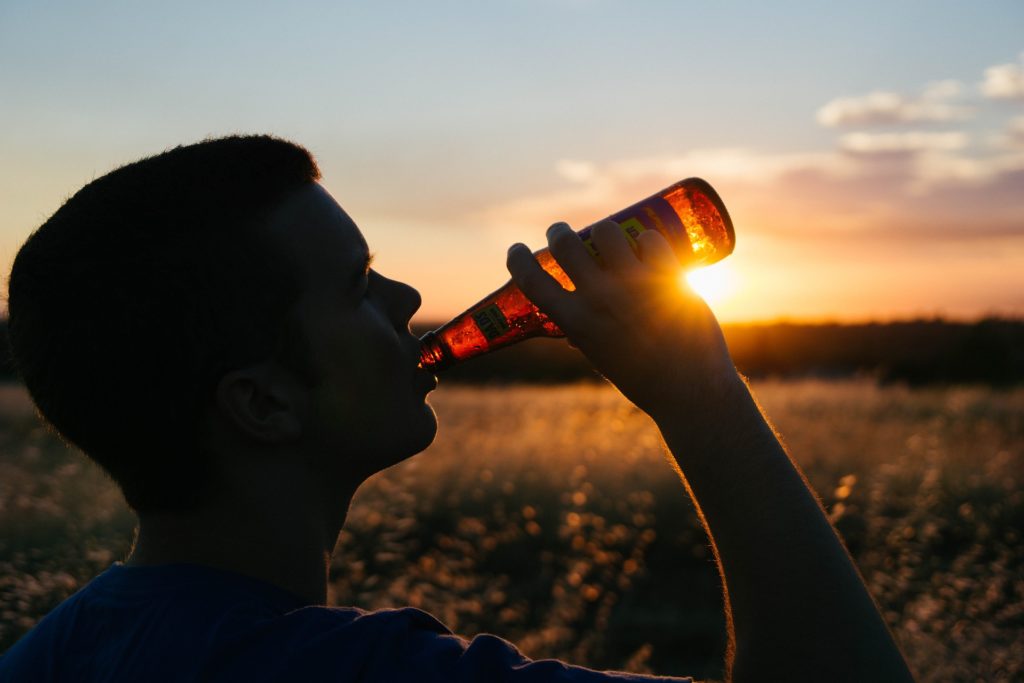
Underage drinking is a common problem among youth in the United States. Each year underage drinking is the cause of over 4,300 deaths, and 11% of all alcohol consumed in the U.S. is in those aged 12 to 20 years [1].
High School
In high schools, underage drinking is common among all age groups and individuals. In 2015, the National Survey on Drug Use and Health found that 20% of youth from age 12-20 stated that they had engaged in binge drinking in the last 30 days [1].
Those that reported drinking alcohol had experienced social, economic, physical, or legal problems, and had a higher rate of depression, anxiety, and suicidal behaviors.
Young Adults
Teens are not the only ones to struggle with underage drinking. Young adults who are 18-21 report that they engage in drinking and risky behaviors. Up to 15.1 million adults 18-21 reported in a 2015 study that they drank alcohol [2].
Not Just in the U.S.
Alcohol is the third leading cause of death in the United States. Approximately 62,000 men and 26,000 women die from alcohol-induced deaths each year.
Outside the United States, almost 6% of all global deaths are due to alcohol consumption [2]. Additionally, alcohol and drug addiction contribute to other diseases, injury-related health conditions, liver cirrhosis, cancers, and injuries on a global scale.
Universities
 Statistically, college students are some of the highest alcohol users. In 2015 it was reported that 58% of full-time college students from age 18-22 had drunk alcohol in the past month as compared to 48% of their peers not in college [2].
Statistically, college students are some of the highest alcohol users. In 2015 it was reported that 58% of full-time college students from age 18-22 had drunk alcohol in the past month as compared to 48% of their peers not in college [2].
In the same study, 12% engaged in heavy alcohol use. On an annual basis, more than 1,800 students a year die from alcohol-related injuries or car crashes.
Diseases and Related Consequences
Cirrhosis, alcohol-related liver diseases, and cancers of the mouth, esophagus, pharynx, larynx, liver, and breast area, are all significant causes of death that can be linked to underage drinking and abuse of alcohol.
The Dietary Guidelines for Americans for 2015-2020 is that women should have no more than one drink per day, and only two drinks per day for men [2].
There is competing research that moderate alcohol consumption can have some limited health benefits by lowering the risk for heart disease, and reducing the risks for stroke and diabetes, especially among middle-aged men and women.
Use Starts Young
Alcohol use typically begins at a young age, most often 12 years of age. Marketing ads target youth with the attraction of alcohol on social media and commercials.
Youth and young adults are shown with alcohol at parties or in groups having a good time, smiling and having fun, which can downplay the high risk of the dangers of underage drinking.
In the United States, underage drinking means, those who drink alcohol and are under the age of 21 [3].
Binge Drinking
Binge drinking can be an even riskier behavior. Some teens will only engage in this type of drinking once a month or less, but it can lead to blackouts, alcohol poisoning, and death.
 Binge drinking is considered to be four or more drinks for women and 5 or more drinks for men, in a short period.
Binge drinking is considered to be four or more drinks for women and 5 or more drinks for men, in a short period.
Binge drinking is an increasingly common problem. According to the Substance Abuse and Mental Health Services Administration, the regularity of binge drinking can increase rapidly as a person ages [4].
As kids who dring underage get older, their drinking increases, the proportion of drinks consumed by 13-year goes from one drink per hour to three drinks per hour for an 18-year old.
Since the 1980’s, underage drinking and alcohol-related deaths have been on the decline. From 2004-2013, research on the numbers of underage drinking in individuals aged 12-20 had decreased significantly.
Risky behaviors have also declined with the decline in alcohol use within the past decade. The most significant reduction has been seen in alcohol-related traffic deaths as reported by the U.S. Department of Transportation [4].
What To Do
Discussing underage drinking with children letting them know that drinking behaviors include riding in a car with someone who is intoxicated or attending a party at a house where there is underage drinking occurring, can help raise awareness.
Talking to your child about the peer pressure, consequences, and effects of underage drinking are the first line of defense for prevention in your family.
Helping your child understand the family’s expectations, beliefs, and values about alcohol use are essential in guiding them to make healthy choices.
 About the Author: Libby Lyons is a Licensed Clinical Social Worker and Certified Eating Disorder Specialist (CEDS). Libby has been practicing in the field of eating disorders, addictions, depression, anxiety and other comorbid issues in various agencies. Libby has previously worked as a contractor for the United States Air Force Domestic Violence Program, Saint Louis University Student Health and Counseling, Saint Louis Behavioral Medicine Institute Eating Disorders Program, and has been in Private Practice.
About the Author: Libby Lyons is a Licensed Clinical Social Worker and Certified Eating Disorder Specialist (CEDS). Libby has been practicing in the field of eating disorders, addictions, depression, anxiety and other comorbid issues in various agencies. Libby has previously worked as a contractor for the United States Air Force Domestic Violence Program, Saint Louis University Student Health and Counseling, Saint Louis Behavioral Medicine Institute Eating Disorders Program, and has been in Private Practice.
Libby currently works as a counselor at Fontbonne University and is a Adjunct Professor at Saint Louis University, and is a contributing author for Addiction Hope and Eating Disorder Hope. Libby lives in the St. Louis area with her husband and two daughters. She enjoys spending time with her family, running, and watching movies.
References:
[1] Fact Sheets – Underage Drinking. (2016, October 20). Retrieved December 01, 2017, from https://www.cdc.gov/alcohol/fact-sheets/underage-drinking.htm
[2] Alcohol Facts and Statistics. (n.d.). Retrieved December 01, 2017, from https://www.niaaa.nih.gov/alcohol-health/overview-alcohol-consumption/alcohol-facts-and-statistics
[3] Drug and Alcohol Abuse Statistics in U.S. Show Alarming Trends. (2017, March 02). Retrieved December 01, 2017, from https://www.ashwoodrecovery.com/blog/drug-alcohol-abuse-statistics-u-s-show-alarming-trends/
[4] Underage Drinking: A Review of Trends and Prevention Strategies. (2016, July 28). Retrieved December 01, 2017, from https://www.sciencedirect.com/science/article/pii/S0749379716301921
The opinions and views of our guest contributors are shared to provide a broad perspective of addictions. These are not necessarily the views of Addiction Hope, but an effort to offer discussion of various issues by different concerned individuals.
We at Addiction Hope understand that addictions result from a combination of environmental and genetic factors. If you or a loved one are suffering from an addiction, please know that there is hope for you, and seek immediate professional help.
Published on March 22, 2018
Published on AddictionHope.com

